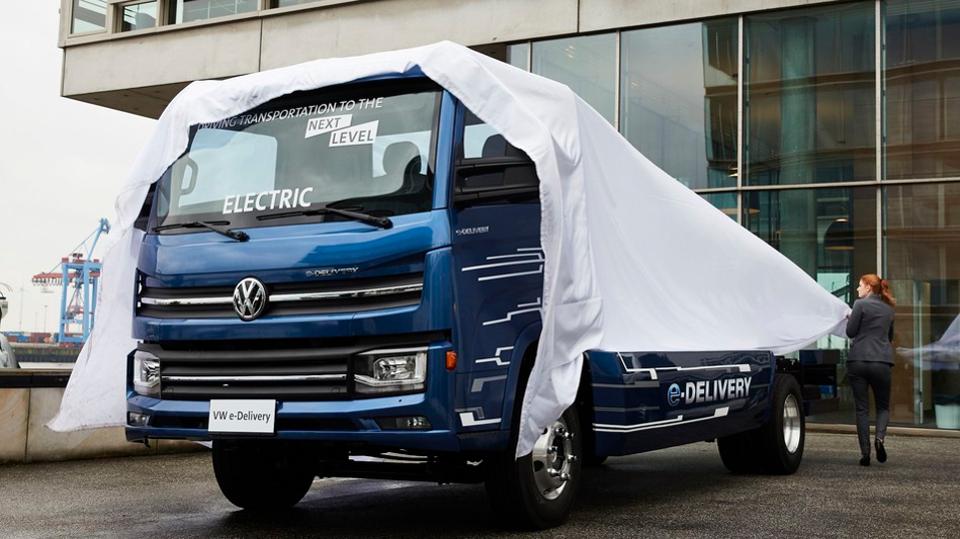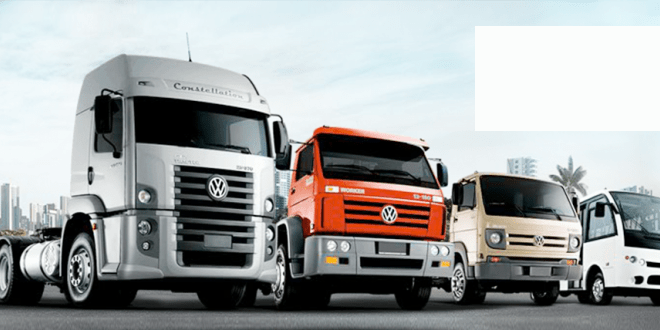
Volkswagen AG’s commitment to developing electric vehicles just keeps getting bigger as the company tries to balance making appropriate investments in alternative drivetrains and repaint its image after a colossal scandal in which it faked emissions tests on its diesel engines to make them seem cleaner than they are.
The company this week said it is committed to electrifying commercial trucks and buses in Europe and is investing $1.7 billion between now and 2022 to make batteries smaller and more efficient to attract buyers of commercial vehicles.
Andreas Renschler, head of VW’s truck and bus division, said Monday that he expects around 5% of VW’s commercial truck sales to be EVs by 2025. The company manages both the MAN and Scania truck brands.
The challenge in creating electric trucks and buses is obvious. Buses are large and have to carry thousands of pounds of people at a time. Trucks carry payloads and have only so much space on board to be taken up with a battery or batteries.

But on the plus side, a large portion of the commercial truck and bus market in Europe is ideal for going electric as long as the costs pencil out for the buyers who manage fleets of trucks and buses. How?
- A lot of delivery trucks drive consistent daily routes, making it
simpler for fleet managers to allocate some portion of their fleet to electric trucks that are range limited.
- Buses — from city buses to airport buses — ride consistent and defined routes every day, and governments and transit authorities are easier customers to deal with in the early going when it comes to adopting new technology because the purchases are tied to public policy.
- Fleet operators transport all kinds of loads, so allocating electric trucks to the appropriate loads becomes easier. It is easier and better, for example, for an electric truck to be used for a load of flowers, or chickens or furniture, than for a load of bricks or steel.
- Trucks are less dependent on aesthetic design considerations. Batteries can easily be designed to be swapped out on a route for freshly charged batteries rather than having a trucker sit idly somewhere waiting for a battery to recharge.
Those considerations, combined with state and local governments’ push to reduce carbon emissions and eventually regulate most internal-combustion engines out of existence, make commercial trucking low-hanging fruit to advance both EV technology and recharging infrastructure.
“We believe in a wide range of alternative powertrains and fuels, depending on local availability, social and local demand and customer requirements,” Renschler said at a press event. “Therefore it is crucial that policymakers adopt a technology-neutral approach” in any regulations.
According to Volkswagen, the new electric systems will be implemented across the company’s brands, with the all-electric buses from the European MAN and Scania makes slated to hit the roads next year.
Volkswagen this week unveiled an early example of its EV work: a fully electric delivery truck.
VW has previously stated it is allocating $84 billion to developing electric vehicles and drivetrains. Additionally, VW and U.S. auto supplier Navistar have said they will introduce electric trucks to the North American market by 2019. And Tesla is readying an electric semi-truck for next month.
For all the reasons mentioned above, commercial trucks and public/private buses are ideal for expanding acceptance, technology and infrastructure for EVs of all kinds.
FOLLOW US ON FACEBOOK FOR MORE LOGISTICS NEWS
The obstacle for greater adoption in the U.S. is that the federal government and dozens of states under Republican administrations view public funding of EVs as a nod in favor of those who support the point-of-view that industrial and human generation of carbon emissions is accelerating potentially catastrophic climate change. It has become Republican orthodoxy to oppose climate change and electric vehicle development and support in the public sector.
Regardless of politics, though, the growth of EVs is happening because of states like California that are driving policy separate from the federal government. Most businesses, too, view the growth of EVs as inevitable despite the politics of the moment. The European Union and China have also set aggressive goals for alternate-energy vehicles.
Think-tank Energy Policy Solutions has projected that at least half of new light–duty vehicles sold in the U.S. will be EVs by 2035. That is rapid growth for being only 17 years away.
Volkswagen is not out on a limb, or behind in technology, compared with its peers. It seems to be making the right investments on the right timeline.








